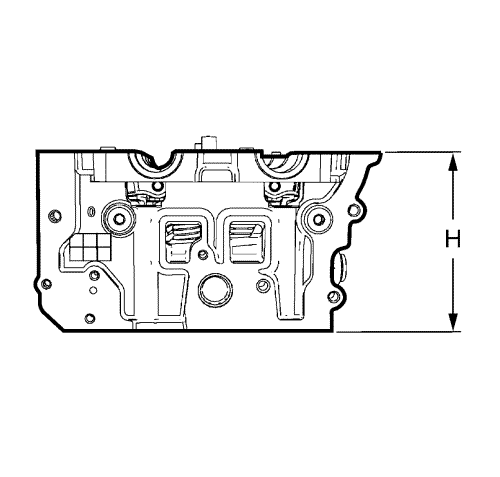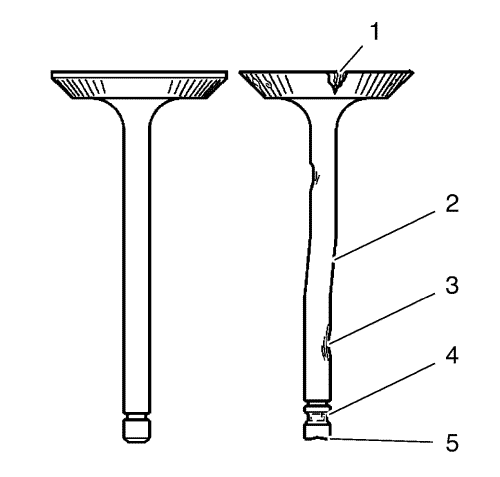Orlando |
||||||||
|
|
|
|||||||
| • | Remove any old thread sealant, gasket material or sealant. |
| • | Clean all cylinder head surfaces with non-corrosive solvent. |
Warning: Refer to Safety Glasses and Compressed Air Warning in the Preface section.
| • | Dry the cylinder head with compressed air. |
| • | Remove any carbon deposits from the combustion chamber. |
| • | Cracks, damage or pitting in the combustion chambers. |
| • | Debris in the oil galleries. Continue to clean the galleries until all debris is removed. |
| • | Coolant leaks or damage to the deck face sealing surface. |
| • | Damage to any gasket surfaces. |
| • | Damage to any threaded bolt holes. |
| • | Burnt or eroded areas in the combustion chamber. |
| • | Cracks in the exhaust ports and combustion chambers. |
| • | External cracks in the water passages. |
| • | Restrictions in the inlet or exhaust passages. |
| • | Restrictions in the cooling system passages. |
| • | Rusted, damaged or leaking core plugs. |



| • | Inspect the valve faces for burning and cracking (1). If pieces are broken, replace the valve and inspect the corresponding piston and cylinder head area for damage. |
| • | Inspect the valve for straightness and distortion (2). |
| • | Inspect the valve stem for wear (3). |
| • | Inspect the valve key grooves for chipping and wear (4) and (5). |
| © Copyright Chevrolet. All rights reserved |
| © Copyright Chevrolet. All rights reserved |